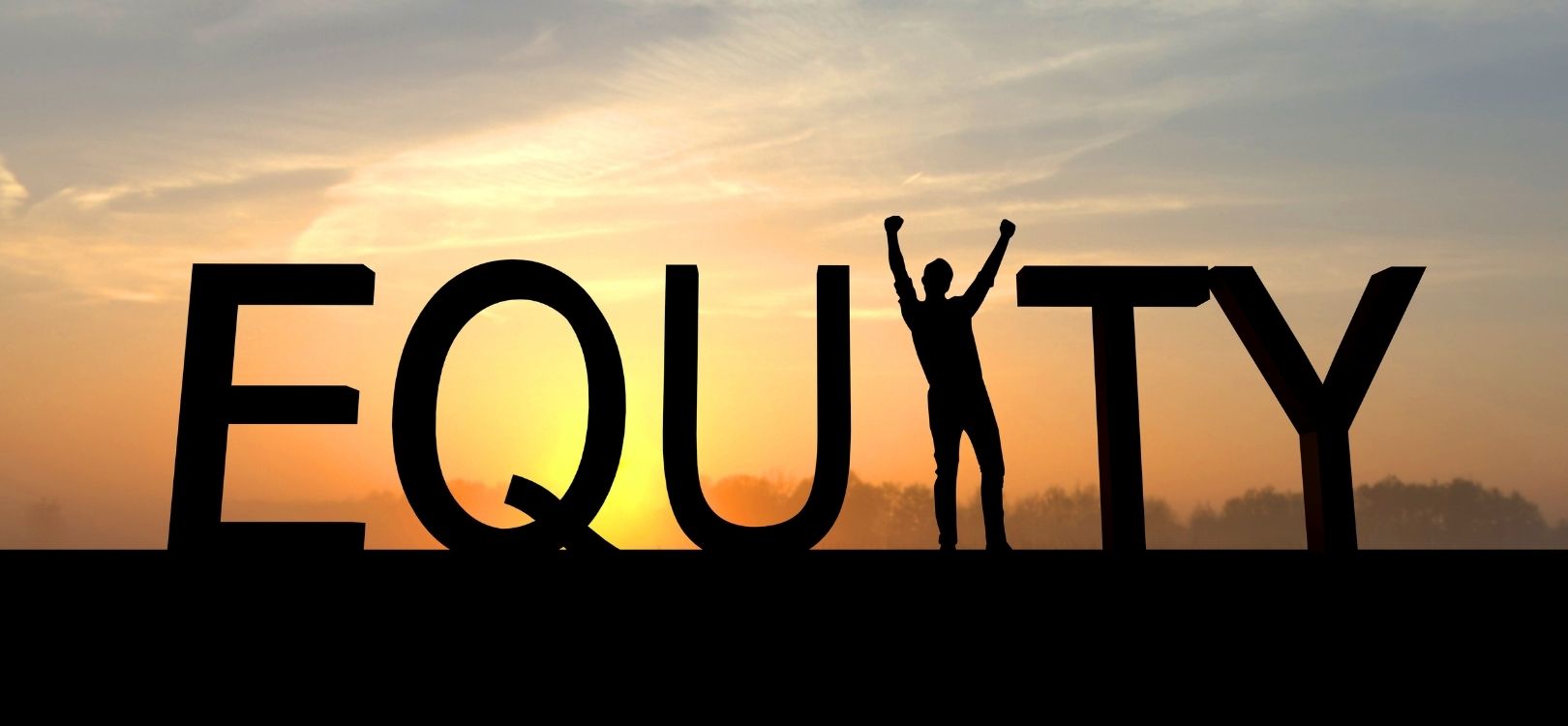
In this week’s blog, our Cultural Infuser Roman Ruzbacky explores the role of DEI in building trust and respect through personal connection and vulnerability.
You always remember a moving story. You might not remember all the details, but you often remember how you felt. The power of personal storytelling gets you to the heart of the matter, unlike any policy, procedure, metric or strategy.
Around 1997, I entered the field of what was then called Equal Employment Opportunity. I began my career as an analytical chemist six years earlier. I would work away in my laboratory testing for the composition and purity of chemicals. I was working on the Australian Magnesium Project alongside chemical engineers, mineralogists and metallurgists. I often worked in solitude. It was an exact profession, requiring precision, timeliness, troubleshooting, critical interpretation of data with room for some creative thinking.
However, I found over time that my analytical skills were put to better use in helping people navigating their way through complex human issues. I then embarked on a seven-year journey of learning and immersing myself in what’s now called Diversity, Equity and Inclusion (DEI) work on top of my full-time role as an Experimental Scientist.
I built my practitioner knowledge and experience through learning, applying and shadowing experts in the field. I became pretty good at unpacking complex issues and by 2015 had managed around 500 discrimination, bullying and sexual harassment complaints. My workplace relations lawyer teacher had managed more than 3000!
Complaints handling experience gave me a good grounding and understanding of the work in DEI.
Complaints handling allowed me to be a good listener and identify the covert and subtle behaviours and systemic barriers in workplaces that created poor workplace behaviours and barriers to employment, including my own barriers and experiences of poor behaviour. Over time, my strength lay in being a doer in the engine room, an enabler, an influencer, an ally, always understanding my place in the conversation, my privilege and regularly checking on my biases.

My mother is from Lopej near Banská Bystrica, a city in central Slovakia, and my father is from Nitra, Slovakia. I’m a second-generation migrant of refugee parents. A two-suit case family. There are about 12,000 people in Australia of Slovak ancestry. We make up about 0.04% of Australia’s population. I recently learned that my grandmother would nurse strangers back to health and feed the hungry when they arrived at her doorstep.
This will help you understand me. Once I build some trust and feel safe to do, I reveal my identity at work and bring my authentic self.
My advice is to work on your relationships. I have seen many People & Culture and DEI departments over the years, chained to the desk, writing strategy after strategy, which end up collecting dust on shelves. Yes, they are important guides and tools to help you unlock the organisation’s potential to create, build or sustain an equitable and inclusive culture. It takes years to build trust and respect and bring people on the journey to share the vision of achieving equality. And only people will bring your words and work to life.
Finding your way as a DEI practitioner
There has recently been an unprecedented surge in DEI activity and a new wave of practitioners, managers and consultants across workplaces globally.
With this has come new challenges and emerging practices, including fad strategies and buzz words. It can be quite confusing. Have you heard the following?
Glass ceiling, glass elevator, glass cliff, double-glazed ceiling, stupid curve, jaws curve, scissor curve, mansplaining, man-peating, man-terrupting, reflecting the community you serve, bringing you authentic self to work, belonging, covering, intersectionality, code switching, bamboo ceiling, gender lens and other lenses, homogenous, lived experience, all roles flex, performative allyship, decolonising spaces, woke washing, Noah’s ark principle of diversity, the myth of merit, cultural fit, right person, diversity of thought, diversity fatigue, fixing the women, the saviour complex, hijacking the agenda, privilege and the list goes on.
You may have entered the DEI field through formal study, research, grass roots activities, employee reference groups, your lived experience or volunteer work. You may have recently attended a DEI conference, workshop or forum, completed an accreditation course, read a few articles and reports and have then become inspired and super enthusiastic. You may then try to bring this enthusiasm back into your workplaces expecting incredible and instant change.
Your organisation may also set the expectation for the unachievable and expect instant results. You may need to temper expectations, especially where there is low maturity or low autonomy in your role. You might grapple with style over substance issues. You may even be blamed for not achieving, for example, a gender representational target, or for your strategy not stopping a nasty sexual harassment incident. You may be competing with other organisational priorities and have no control over budgets or resourcing. Or everyone may all of a sudden become an expert in DEI.
How do you juggle numerous DEI action plans? What combination of strategies result in equitable outcomes? Are we considering the work area’s challenges and contexts? How do you raise consciousness and build competency? How do you address under-representation, under-utilisation and unconscious bias (discrimination)? And can you do this on rolling contracts? Is the ultimate goal working yourself out of a job?
As a DEI practitioner, how do you change people’s deeply ingrained beliefs and behaviours? How do we get the unengaged? The frequency of discrimination, sexual harassment, violence, racism, homophobia, ageism, ableism, has not slowed down. Can you change people’s core beliefs through diversity and inclusion strategy through compliance activities? Understanding the people and systems you are operating in will definitely help you.
And finally, should the Diversity Manager or practitioner be responsible for the actions and behaviours of others? Should they wear this burden of responsibility? I keep an open mind about the realities of human behaviour. I think about how self-interest and profitability intersect or clashes with diversity strategy. Or how diversity strategy is used as a commodity or tool for exploitation. And with the role comes humility as you aim to continue role model inclusive behaviours in every setting.
There’s a lot of bones of good intentioned people and change makers along the highway, and we may have contemplated abandoning the work numerous times. So, if you are a new DEI practitioner, or one that is at the crossroads, be fearless and unapologetic. Be authentic and humble. Have a clear and compassionate voice. Continually work on a developing a clear narrative and rationale for the work. Write about your work and go deep into the work. My old boss used to say to me as a young scientist, people don’t read enough. So, try to make time for reading, reflecting and writing. There are gems in a sea of information that allow you to do the work well and explore the work deeply.
Perhaps earlier in my career, I would have loved to attend a speech I heard on DEI anti-resistance and mitigation plans a few years back. It would have helped me to take care of myself better and to be the river that flows around the rocks and branches much earlier in my career, rather than banging on tables (figuratively speaking). The fire in the belly has always been there and no one can say, you can’t work in this space.
DEI post lockdown
We have taken some significant steps forward during COVID 19, lockdown and working from home. We have probably surprised ourselves by the level of productivity that can be achieved working from home.
It has been equally surprising how much we can achieve working virtually. I have been very impressed with the energy and intensity of forums, especially those that have explored human experiences of inclusion and exclusion.
We would have developed a heightened awareness of people’s needs and circumstances during this challenging time, including parental and carer responsibilities, greater isolation, mental health issues, increased anxiety levels, domestic and family violence.

Through the widescale introduction of on-line working, we have invited work colleagues into our homes. My dining room has become my workplace. My son’s school has been run at my dining room table. Employees who are parents and carers have had to be sensitive to what others in their home were going through and pay attention to their emotional needs while juggling work. We can also tend to get oversaturated with screen time. The lines between work and home have become blurred for many.
I believe we have leapt into a new area of practice that we haven’t really planned for. We have just adapted and hacked our way through it.
Here are some questions I have been unpacking during the past two years during lockdown.
- How do we drive cultural change from behind a laptop screen?
- How do we drive change without face-to-face human interaction? Without a greeting or handshake?
- How do we build trust and respectful relationships?
- How do we read as room or create a safe and inclusive room? How are the vulnerable or isolated coping?
- How do we celebrate diversity and build social cohesion and harmony?
- How do we mobilise people?
- Do we fully understand the impact of our current environment on DEI work?
- How have we adjusted to working in a way we might not prefer?
Energy, passion and resilience
For anyone who has worked in the areas of human rights, diversity, equity, inclusion and accessibility, we have a deep respect and care for the work because it reflects our values and beliefs and helps to make lives better. DEI practitioners, advocates and activists, including allies, are looking to create a fair and just world. We aim to be genuine, authentic, empathetic and sincere in our endeavours.
We actively look for any opportunity to engage with the work, talk about the work, read about the work, talk out aloud to ourselves when we see something that’s not right. Many of us can’t switch the work off. We see it everywhere. We hear it everywhere. It’s everywhere around us. It even visits us in dreams.
DEI work requires emotional investment, a fire in the belly, someone who can stay calm in the storm, be the voice of reason and compassion and be open minded. We aim to keep centred, objective, rational, hold our integrity, speak our truth and, at times, walk comfortably on the fringe. Our empathy levels are at eleven. We practice humility, inter-personal communication skills and genuine empathy towards others. We do not engage in self-interest.
The work feels endless and cuts to the core. The role at times requires challenging the status quo, self-interest and narcissism. We use our acquired and cumulative skills to continue to challenge and change a system that allows inequity to happen. At times it feels like no-one is listening and we’re shouting in a vacuum.
As practitioners, we are good at turning challenge to opportunity. We have an ever-increasing global reach and we are seeing increasing opportunities to sharpen our practice without leaving home. Wellness, compassion, connectedness are all traits intrinsically tied to equity and inclusion.
The work in DEI has continually evolved and conversations matured. Our profession is quickly growing and gathering in momentum and complexity, even through adversity. Our change continues to be slow.
Our DEI evolution should capture the spirit and imagination of our community, to heal and bring communities together with the intelligence and action the moment truly calls for. Now is the time to lead and create a world fit for the 21st century with clarity, momentum and optimism. Every inclusive action all counts, no matter how small or unseen.
And, as the Dalai Lama said, “If you think you are too small to make a difference, try sleeping with a mosquito.”
Share this Post